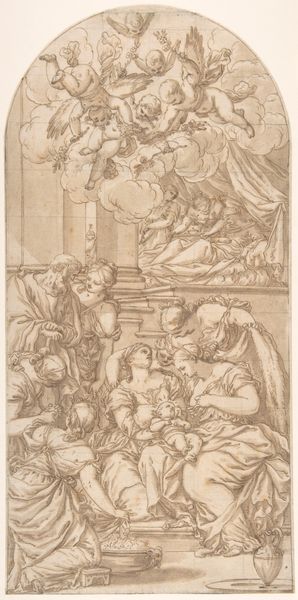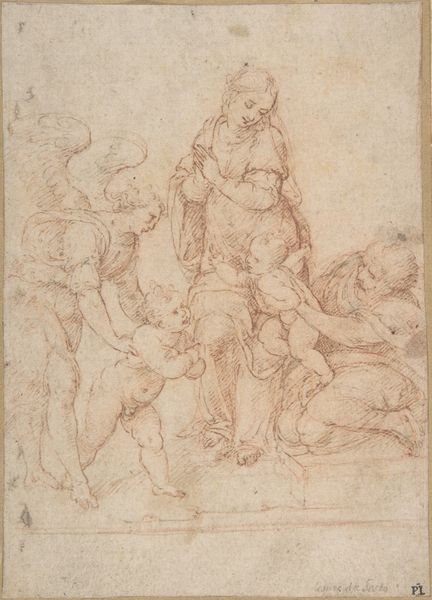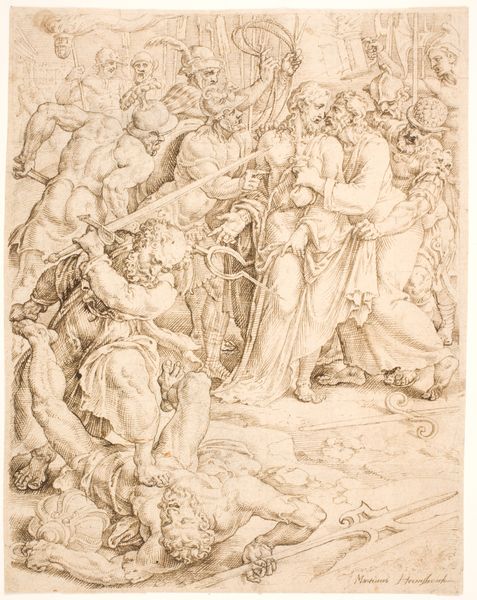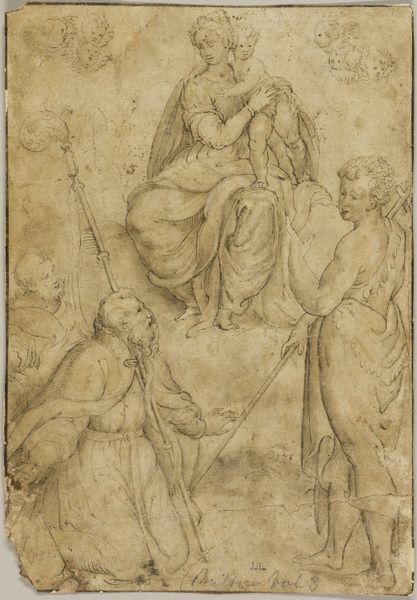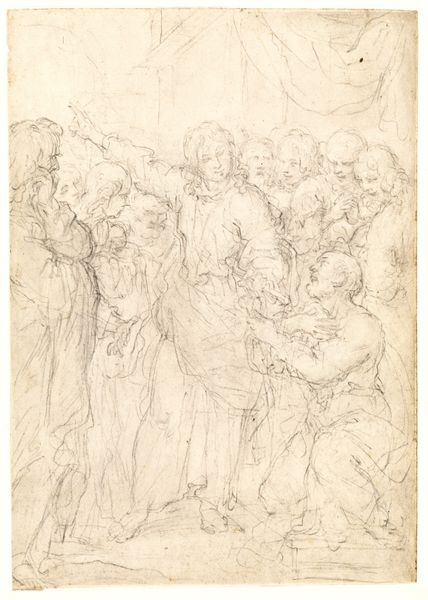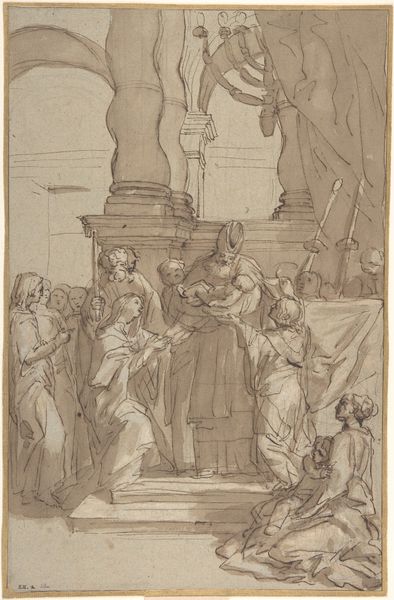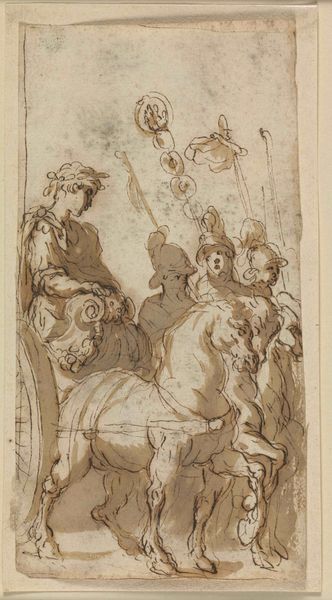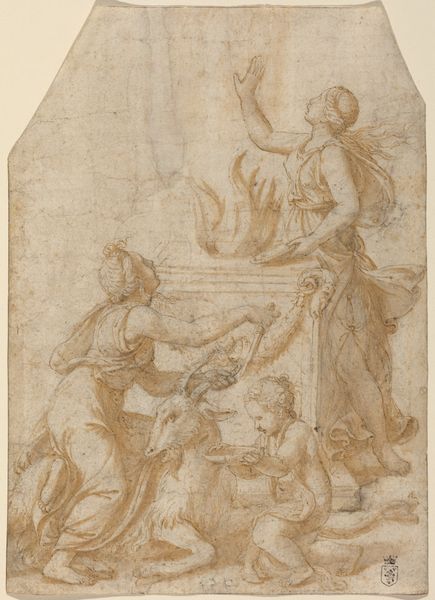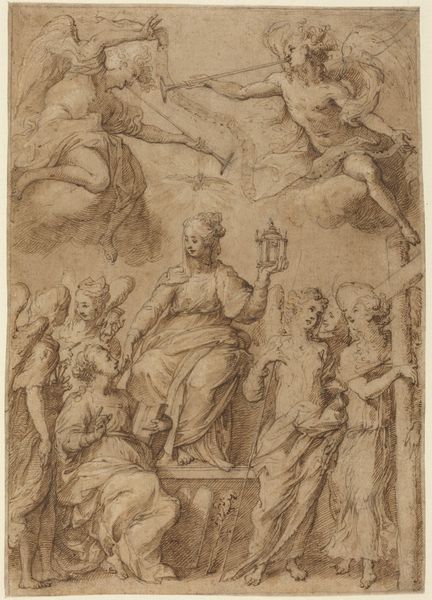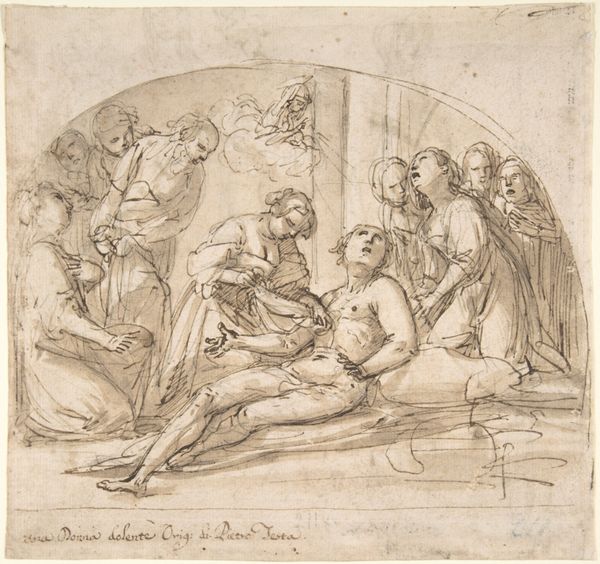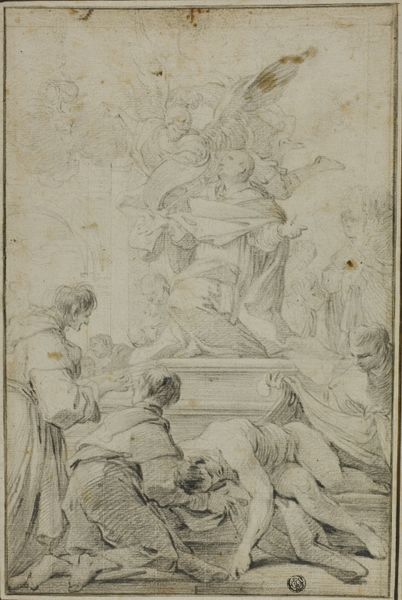
The Adoration of the Magi 1500 - 1571
0:00
0:00
drawing, pencil, charcoal
#
portrait
#
drawing
#
narrative-art
#
landscape
#
charcoal drawing
#
figuration
#
11_renaissance
#
pencil drawing
#
pencil
#
charcoal
#
history-painting
#
italian-renaissance
Dimensions: Overall: 14 5/16 x 9 5/8in. (36.4 x 24.4cm), maximum, with completed strip of paper at bottom border and upper corners cropped
Copyright: Public Domain
Editor: This is "The Adoration of the Magi" a pencil and charcoal drawing by Nosadella, placing its creation sometime between 1500 and 1571. It’s held at the Metropolitan Museum of Art. It feels like a study, capturing the awe and solemnity of the moment, but there's also an unfinished quality that I find compelling. How do you interpret this work, especially the use of light and shadow? Curator: The drawing, though unfinished, vibrates with the symbolic weight of the event. Note how the artist emphasizes the Magi, not just as individuals but as representations of different ages and races bowing before the Christ Child, each bearing gifts, mirroring the universal appeal of the Christian message. What emotions are evoked as you follow the lines upwards toward the figure on horseback? Editor: There’s a sense of elevation, not just literally in the composition, but almost like a hierarchy of reverence as we rise to the rider and finally come to rest on Mary and Jesus. The line of sight directs our eye to something bigger. Curator: Precisely. Now, look closely at the sleeping figure at the lower left. This hints at something more. Could this be Joseph, in a moment of respite or perhaps a premonition of future sorrows? Think about the recurring image of sleep to represent anxiety or anticipation. The placement here changes the dynamic of the piece completely, yes? Editor: It does. Seeing it that way shifts my understanding. The figures are familiar, but the emotions the artist imbued here feel fresh. Curator: Exactly. Remember, artistic traditions often revisit themes like the Nativity. The symbols embedded are timeless, resonating across cultures and time periods to speak to shared human experiences of hope, faith, and mortality. What lasting impression does it give you? Editor: This has been eye-opening, allowing the chance to go beyond the familiar to understand the significance of individual expression of universal emotions. Curator: Indeed. And that is how images allow a cultural continuity.
Comments
No comments
Be the first to comment and join the conversation on the ultimate creative platform.
